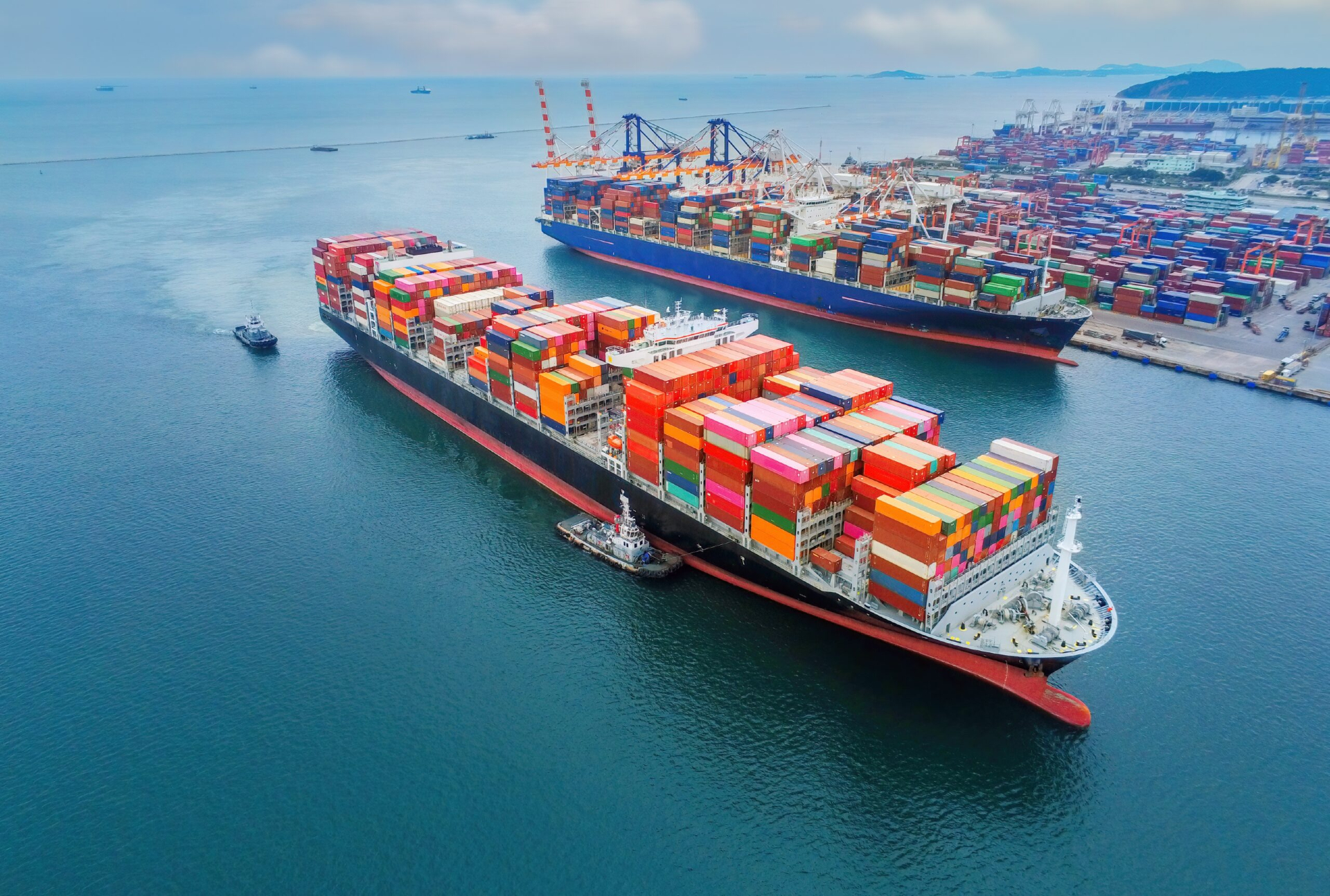In this article, Marina Comninos explains how the electronic bill of lading (eBL) is key to transforming international trade. Marina Comninos is the Co-Head for ICE Digital Trade, formerly known as essDOCS, and a member of the ICC Commercial Law and Practice Commission.
The views and opinions expressed in this article are those of our authors and do not necessarily reflect the official policy or position of the ICC Academy or ICC.
Electronic bills of lading (eBLs) are here to stay, at last. BIMCO’s “25 by 25” campaign surpassed its initial target within its first year. The campaign, launched in 2023, commits major shippers in the bulk sector to use eBLs for at least 25% of their annual seaborne trade volume for one commodity by 2025. The initial four participating shippers, BHP, Rio Tinto, Vale and Anglo American, who together account for approximately 75%+ of global iron ore trade, exceeded this target in their iron ore trade by mid-2024. And their digital penetration rate in metals and minerals is constantly rising.
This paper examines why bills of lading (BLs) are so vital in international trade and how digitizing them is transforming trade.
The importance of the bill of lading in international trade
BLs are essential in international trade, performing three key functions:
- Receipt: The BL, which is issued by the carrier, serves as proof that the cargo has been loaded onto the vessel, documenting the quantity and condition of the goods at the time of shipment. As a rule, a subsequent holder of the BL can rely on statements made in the BL and, should the actual goods not match their description in the BL, the receiver can sue the carrier for damages.
- Contract of Carriage: The BL evidences the contract of carriage. Normally, the terms on which the shipper will be entitled to use the carrier’s ship are set out in the charterparty between the carrier and the shipper. However, in the hands of a buyer to whom the BL has been transferred by the seller, the terms of the BL will prevail over the terms of the charterparty.
- Document of title: The rightful holder of a bill of lading can demand delivery of the goods by surrendering the BL back to the carrier. This is critical in commodity trading: buyers are willing to pay for goods which are still in transit in return for physical possession of the BL, as that gives them the right to demand delivery of those goods at the discharge port or resell the goods to another buyer.
Despite their critical importance and the vulnerabilities associated with their paper format—such as susceptibility to fraud and significant inefficiencies – BLs have largely remained paper-based. This represents a paradox within the context of contemporary advancements in digital technology, artificial intelligence, natural language processing, and big data. The justifications often cited by the industry for the lack of digitization include legal uncertainties, the international nature of trade, a perception that paper-based systems function adequately, and a lack of demand for eBL solutions from clients and partners.
In this article, we will look at each of these challenges (myths) and seek to debunk some of the noise that prevents the industry from adopting eBLs and to focus on how we can accelerate this transition from analog to digital by overcoming the remaining challenges.

Certificate in Digital Trade Strategy (CDTS)
The evolution of the bill of lading: From analog to digital
The International Chamber of Commerce estimates that 4 billion documents move through the global trade system on any given day.
Read: Digital Trade 101 – What you need to know
McKinsey estimates that digitising bills of lading could save $6.5 billion in direct costs and enable $40 billion in global trade. Surely that is incentive enough for the industry and other stakeholders to be laser focused on facilitating the transition, even if it is complex? That has not, historically, been the case though.
Technological challenge
Attempts at trade digitization stretch back to the 1980s: Starting with Intertanko and Chase Manhattan’s brief SeaDocs initiative in the mid-1980s to the EU-supported EDIBOL project and Bill of Lading Europe (Bolero) in the 1990s, and Shell and BP’s ongoing collaborations with Solidocs until the early 2000s.
By the 2000s, technological breakthroughs in the form of easily accessible and cost-effective SaaS solutions, and trust in the power of digital driven by the uptake in online banking and other asset registries, enabled adoption by the innovators and early adopters. The first operational rollout of eBLs was in 2010, when various European and Americas energy market participants started operational adoption of ICE Digital Trade’s eBL Solution. The metals and agricultural markets followed around 2015 and leading container lines committed last year to fully transition to eBLs by 2030.
Legal challenge
However, progress was slow, and a key reason cited by the industry to explain the pace of adoption was legal uncertainty. Historically, national laws did not recognise eBLs as the legal equivalent of paper bills, so eBL providers have developed contractual frameworks which ensure that their eBLS are legally and functionally equivalent to paper bills.
While these contractual frameworks have proven valuable and some have received broad acceptance, a legislative landscape enabling trade digitisation was bound to follow. Industry pressure, and the impact of COVID-19 on international trade, meant that a decade later some progress was finally made in modernising eBL legislation. The foundations were set in 2017, when UNCITRAL published the Model Law on Electronic Transferable Records (MLETR).
Read: MLETR – An overview of UNCITRAL’s Model Law on Electronic Transferable Documents
To date, of the key maritime nations, the US, Singapore and the UK have changed their laws so that eBLs now have the same legal effect as their paper counterparts. France, Germany and the Netherlands are soon to follow, and the APEC have publicly declared that they will adopt legislation recognising eBLs. These laws require an eBL solution to be ‘reliable’ and that is a definition the industry has been grappling with. In October 2024, the ICC Digital Standards Initiative released a beta version of a self-assessment framework, which has now been finalised and released.
Cyber challenge
There has also, justifiably, been a lot of focus on ensuring that eBLs are secure: they are, after all, the ‘key to the warehouse’, entitling their holder to take delivery of cargos worth millions of dollars. There is some irony in this, as paper bills of lading set the bar on security quite low: the industry relies on an illegible handwritten squiggle at the bottom and back of a piece of paper which is transported by courier from one office to another. A digital solution, which can identify and control access, maintain logs and automate what otherwise requires planes, trains and automobiles, will always win. And the industry does a lot more than just improve on paper security: robust eBL platforms can provide a highly secure, auditable, transparent means of rewiring and digitalising post trade operations.
‘Sitting on the fence’ challenge
It is surprising how entrenched the ‘it works why change it’ argument has been. People have found multiple excuses to stay on the fence, not taking the leap to digital, even in the face of overwhelming and obvious digitisation benefits. The fact that every other industry is already digital does not shake the faith that shipping and trade are different, somehow ‘justifiably’ more conservative.
However, , by the mid-2020s, the industry has multiple technical solutions to digitise trade, is satisfied that the resilience and security of these digital trade solutions can be ensured and is on track to overcome the key, legal hurdle. It seems that the industry has stopped looking for excuses and the late majority is instead looking for paths to digitisation. There is finally broad recognition of the numerous benefits of digitising: the convergence of the physical, financial, and document chains enables banks and corporates to mitigate risks, automate processes, enhance working capital management, and lower operational costs.
The trick now is not to lose momentum: we need to accelerate to avoid burnout by those in the industry who are digitising.

What challenges remain to fully and finally digitise trade?
Reaching critical mass, where trade is predominantly digital, requires the industry, with the support and expertise of solution providers, to address the two key remaining hurdles:
- Interoperability: Digital trade requires participation across the supply chain, and the benefits increase with the size of the network. A prerequisite to mass adoption is therefore the ability of eBL solutions to interoperate: members of the international trade community must be free to choose their preferred eBL platform(s), and be able to interact with counterparties who have not made the same choice. So, what is the industry doing to facilitate this?
- Broad adoption of laws recognizing eBLs as equivalent to their paper counterparts is key to this. Stakeholders need to keep lobbying governments to enact MLETR, or a piece of legislation influenced by the MLETR.
- Technical interoperability and data standards requires close collaboration between the relevant stakeholders, and great work has been done by the Digital Container Standards Association (DCSA) and the Future International Trade (FIT) Alliance to enable this.
- Solution providers need to work together to develop interoperable solutions showing successful adoption and scalable use and giving the industry a path forward. A number of projects are in the works so meaningful developments are not far off.
Read about the FIT Alliance here: Future International Trade Alliance launched
Read about the DCSA here: DCSA’s role in the digital transformation of container shipping
- Change Management: If project management is like herding cats, and program management is like herding tigers, then digitizing trade is like herding all the planet’s animals onto Noah’s Ark while it’s still under construction. Digitising trade is a complex project because it requires simultaneous change across three industries, commodity trading plus shipping plus banking. Even within an organization, contracts and process changes must be made across several departments with different priorities and drivers. For corporates, this change management includes trading, finance, execution or operations and freight departments. For banks it will include a review of risk across multiple jurisdictions and regulatory environments. As a result, trade digitisation requires coordinated and simultaneous change management across the supply chain. The tools to address this challenge are well known:
- Focus on easy wins to demonstrate that digitizing is possible and to demonstrate value
- Build industry consensus and momentum, as ultimately no company can digitize trade by themselves
- Digitise in steps to ensure that benefits can be quickly realized as you progress
- Ensure that you publicly communicate your plans both within your organization and your industry, so others can learn from your work and work with you towards digitization
- Publicise the benefits of digitization, to ensure the value proposition can be clearly articulated
- Set realistic timelines and provide incentives for digital transformation to your teams and counterparts
Leading global trade’s digital shift
Trade cannot truly prosper in the 21st century without digitization. The benefits are self-evident, as digitisation will reduce the cost of trade finance, which will boost global trade. Implementation is long overdue, but addressing the remaining hurdles is possible, with deep expertise and a cooperative approach. Strong, decisive leadership is critical to this, and we are seeing the industry take the critical steps needed to deal with the last bastion of paper, and finally to shift the shipping and trading industries from analog to digital.
A 2024 survey conducted by the International Chamber of Commerce (ICC) and other FIT Alliance co-founders BIMCO, DCSA, FIATA and SWIFT reveals a steady rise in the adoption of eBLs. Read the survey results here.




